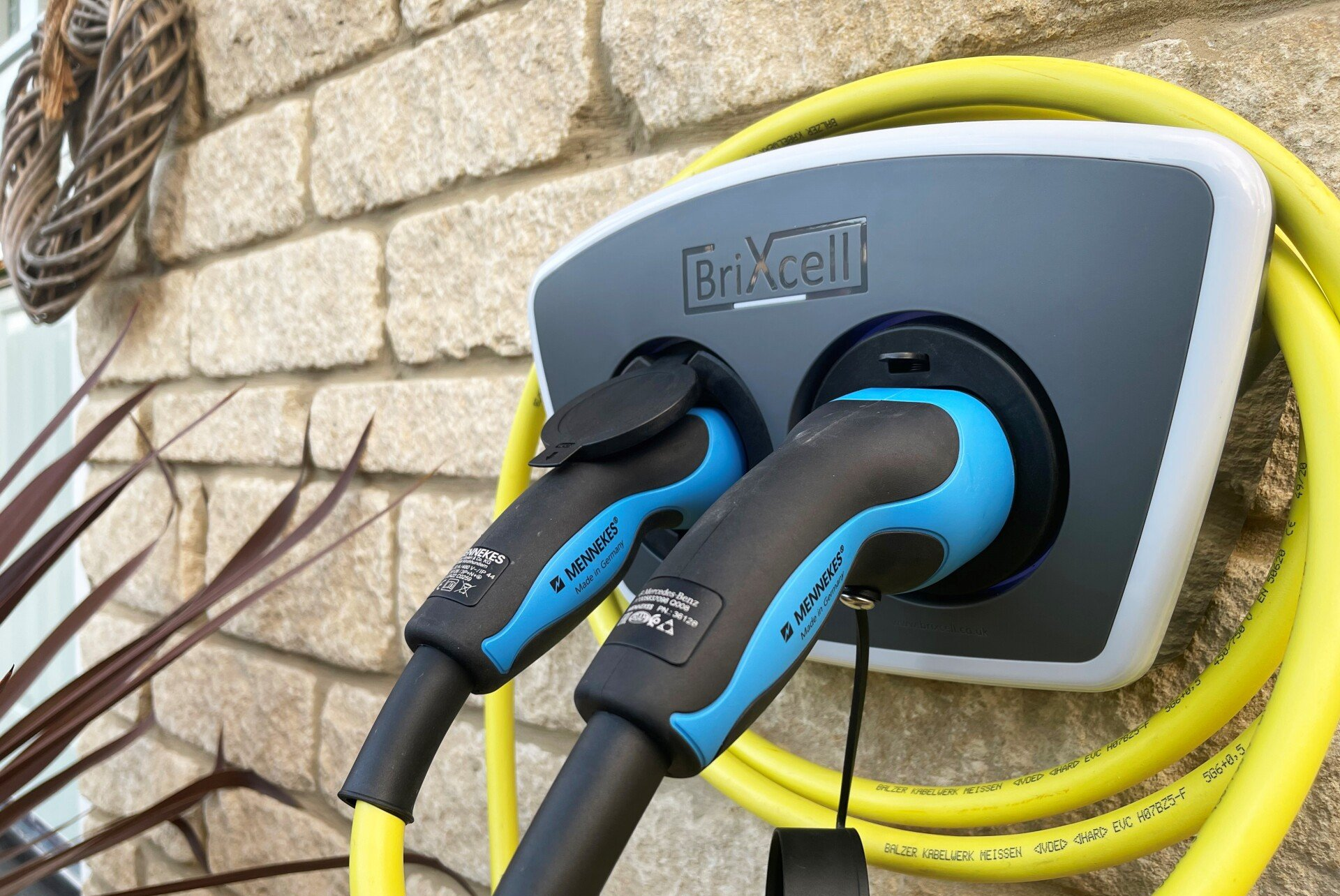
The UK’s transition to electric vehicles
The 2030 electric vehicle transition
The full transition to electric vehicles (EVs) will be one of the most important actions to achieve the UK’s Net Zero target. By 2032 at the latest, the Climate Change Committee (CCC) has called for all new light-duty vehicles sold, including passenger vehicles, taxis, vans, motorbikes and mopeds, to be fully battery-electric vehicles. To reach Net Zero, all vehicles – including heavy-goods vehicles (HGVs) – must be fossil fuel free by 2050. For passenger vehicles and vans, this will mean accelerating the uptake of EVs from around 400,000 today (including battery-electric and plug-in hybrid models; 1% of all UK vehicles) to 23.2 million by 2032 (55% of all vehicles), and by 2050 possibly up to 49.0 million (100%).
To achieve this, UK Government and industry must implement a range of policy and market mechanisms needed particularly for passenger vehicles and vans, while also addressing wider transportation emissions through reduced vehicle usage as well as moving towards electric, hydrogen or ‘cabling’ of heavy-duty vehicles. While the steps needed to reduce wider transportation emissions are complex, the pathway to a full transition to electric passenger vehicles is clear and relatively straightforward.

a) Emissions from transport must fall
Transport is now the highest emitting sector of the UK economy, accounting for 22% of total GHG emissions, 113 MtCO2e in 2019. Cars comprise 13% of the UK’s GHG emissions, vans 4% and HGVs 4%.1 Urgent action is required to drive down transport emissions, as they have remained largely flat since 1990. Although vehicles have become more fuel-efficient, this has been offset by increasing travel demand.2 Emissions from transport – and from passenger vehicles – will need to be cut by over 70% to meet the Sixth Carbon Budget3, which sets a limit on UK emissions in the mid-2030s in order to stay on track to meeting Net Zero by 2050.
b) Current barriers to a 2030 transition
Despite the recent Government announcement to phase out sales of new petrol and diesel vehicles by 2030, the UK is currently not on track to switch all new vehicles to fully battery-electric by 2030. Beyond 2030, significant questions remain that need to be addressed – such as the increased demand for electricity and where this will come from, sourcing and supply of rare earth materials for battery production and capacity for battery recycling. Policies and strategies are needed to overcome these challenges longer-term, but short-term, several key barriers must be overcome in order to reach the 2030 transition date:
- Lack of an overarching strategy and targets for sufficient charging infrastructure, particularly on-street. Currently, there are approximately 18,0004 public charging points for around 400,000 plug-in electric vans and passenger vehicles. In order to grow the UK’s EV fleet to 23.2 million EVs by 2032, the CCC estimates 325,000 public charging points will be needed.1 While the UK Government has set targets to double rapid charging by 20245 and ensure access to 2,500 high powered charging points across England’s inter-urban routes6, no targets have been set for on-street or at-home charging. Currently, 80% of EV users charge their vehicles at home overnight7, while 34% of households do not have off-street parking and need to charge on-street or elsewhere.8 Charge point grant programmes have been rolled out, but there is an absence of an overarching strategy to coordinate and support Local Authorities to ensure that the required number of charge points by region is available in time. Currently, over 167 Local Authorities have 20 or fewer charging points.
- Restricted network capacity and cost of upgrades. Across the UK, there are constraints on the capacity and reliability of the Transmission Network Operators (TNOs) and Distribution Network Operators (DNOs) to enable sufficient EV charging infrastructure. Companies seeking to install charging points for their fleets, staff and customers at forecourts as well as Local Authorities can be faced with significant costs (e.g. some have been quoted costs of millions of pounds to pay for the necessary reinforcement upgrades), which can prove an impediment to proceeding with charging infrastructure. Furthermore, a company requesting capacity from DNOs must solely fund the cost of reinforcement upgrades even when others will later use the capacity, which can deter a company from being the first to request the upgrades.
- Limited supply of electric vans. While supply and availability of passenger vehicles have improved in the last few years and are expected to continue to improve dramatically in future – from 20 models of EV in 2019 to Volkswagen alone planning over 70 new models by 203011 – few electric van models are available. Six models of electric van are currently available in the UK, and a further fourteen are expected in the next few years12, but supply of these vehicles is expected to be limited with long order wait times. Some fleet owners have indicated that they believe the incentives available in the UK are not currently sufficient to encourage enough vehicle manufacturers to retool their operations for electric vans and create sufficient supply.
c) Enabling policy: what needs to happen?
The UK Government has put in place a number of positive measures, programmes and regulations to support the transition to EVs – including innovation in smart energy technologies13, funding schemes for public rapid, on-street, home and workplace charging as well as additional incentives for EV uptake. However, more work is needed to ensure that the framework is in place to drive the required market transformation towards a full EV transition by 2030:
- Align incentives and mandates to targets and monitor impact. Establishing and communicating long-term clarity on the availability and approximate timing of incentives and targets – ideally to 2030 – will enable industry to plan fleet strategies and Local Authorities to plan for charge point roll-out. Linking incentives to targets will also ensure that funding is focussed on the necessary preconditions for petrol and diesel vehicle phase-out, and will allow funding to shift to the next priority once particular targets are met. For example, grants for passenger vehicle purchase could be gradually withdrawn once EVs reach price parity with conventional petrol and diesel vehicles and then redirected to vans. Communicating such an approach in advance could stimulate increased production, and ideally reduce the length of time grants are needed as supply increases. Agreeing and communicating a replacement for the EU Emissions Trading Scheme will also be critical to ensure that the right level of disincentives for the purchase of petrol and diesel vehicles exists.14 Transition to fiscal instruments, such as vehicle excise duty (VED), VAT and fuel duty, should also be explored and can be considered as part of the fiscal changes needed to aid the COVID-19 recovery.15 Furthermore, tracking the overall supply of vehicles and relative share of sales that are zero-carbon should also inform timing and scaling of additional Government mandates, a Zero-Emission Vehicle Mandate which would require increasing shares of sales to be zero-carbon, reaching 100% by 2032 at the latest.
- Devise a comprehensive charging strategy, including for on-street charging. Sufficient access to charging infrastructure is essential to enable a full EV transition. Owners and drivers of corporate fleets, taxis, shared vehicles and private vehicles must all have confidence that they can access charging infrastructure in the locations that fit with their needs – including the 34% of households without off-street parking. A strategy with input from corporate fleets and residents must be developed to ensure that the challenges facing Local Authorities in rolling-out infrastructure – including lack of staff capacity, lack of forecasting capability to assess where and how many charging-points will be needed, how to cover maintenance costs and how to ensure fair and equitable use of parking – can be addressed and overcome. As part of this strategy, there also needs to be greater citizen awareness and better understanding of how to get a charge point installed when off-street parking is not available. While the focus on rapid charging along inter-urban routes and rapid charging hubs is commendable, comprehensive on-street charging is a necessary precursor to a full EV transition.
- Reinforce the distribution network and provide a fair funding model as well as smart charging. While significant funding has been applied to smart charging, the reality is that installing many charge points will still require network upgrades. Government must continue to work with industry and network operators to ensure there is a fair funding model to enable maximum charging infrastructure installation, without placing undue cost burdens on Network Operators or the first-mover company or Local Authority in a particular region. Furthermore, electricity grid upgrades must begin in the 2020s, as ensuring these networks are ready to meet future demand is more cost-effective than implementing network reinforcements once demand outstrips capacity.
ecogozero is part of the Eco Group of companies.
© Eco Group 2022. All rights reserved.
Your privacy is important to us - we will never share you contact details with third parties. To view the Eco Group's privacy policy, please click here.



